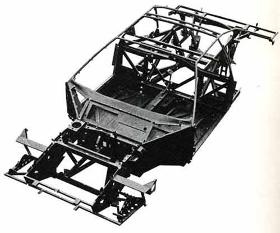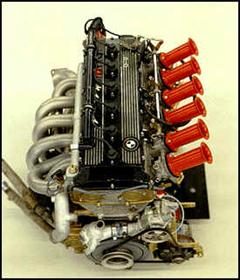|
Technology of the M1 |
|
The Werk Shop 28814 Nagel Ct., Unit B Lake Bluff, IL 60044 (847) 295.3200 Telephone (847) 615.9375 Fax |
|
Contact: |
|
E-mail: Administrator@ProjectM1.com |
|
Contact: |

|
Martin Braungart, Jochen Neerpasch’ second in command, who was very influential during the M1’s development, was quoted as saying: “We started with the development of the M1 because we wanted to have a car that would be competitive in motor sport. We consistently strived to reach this goal, like we would have done if we were building a Formula 1 car. That is why even the street version is build with practically 100% racecar parts and had to be adapted to be able to participate in regular traffic.” |
|
This more or less typifies the (street version of the) M1; it is a racecar modified to be used in regular traffic. The street version would not exist if it wasn’t for FIA’s homologation rules (see M1 History). The same rules dictated that the differences between the street and race versions, if any, had to be quite small. Even though the relationship between BMW Motorsport and Lamborghini was terminated, a lot of the original subcontractors stayed with the project. The backbone of the M1 is a steel frame, build by Marchesi, a firm located in Modena, Italy. There is no difference between the frame of the street version and the frame found in the racecars. It features an integrated roll cage and iwas designed to be light in weight yet extremely rigid and stiff to be able to support high power engines. In Group 5 trim the turbo-charged M88 engine produces, depending on turbo boost, about 900 hp. The front of the frame was strengthened with steel plate to improve the safety of the occupants. Other reinforcements were made to keep the engine from moving forward during a crash. A finished frame weighted 194 kg (about 430 lbs) and took about 150 man-hours to make.
|

|
During the beginning stages of the development of the M1 the idea was to have a company other than BMW develop and produce the engine. There were plans for 8 and even 10 cylinder engines. It was relatively late in the development process that the decision was made to use a BMW straight 6 power plant. The starting point for the development of the M1 engine (internally designated as the M88) was the motor of the 635 CSi. At that point in time this unit (the M90) was the most powerful engine available within BWM. The M90 had been around for about 10 years but BMW’s engine guru Paul Rosche had a lot of work to do before the motor was ready to be used in the M1. In the end the commonality of the M90 and M88 engines was very small. |
|
A completely new head, with 2 camshafts and 4 valves per cylinder, was developed and the decision was made to use a dry-sump lubrication system. This would mitigate oil starvation problems that can occur during hard cornering but it also allowed the engine to be mounted lower in the frame, thereby lowering the center of gravity of the entire car. A dry-sump system also reduces parasitic loss compared to a wet sump setup. Paul Rosche decided to use a mechanical fuel injection system made by Kugelfischer. The high pressure of this system helped in reaching an optimized mix of the air and fuel. The final product was available in 3 different versions, there was the M88 engine for the road cars, detuned to produce 277 hp, the M88/1 for the group 4 racecars, producing 490 hp and the turbo-charged M88/2 for the group 5 cars, producing between 850 and 950 hp. The racecars were producing their peak power at a stratospheric 10,000 rpm. It is testimony to the great strength of the engine that this is even possible. |

